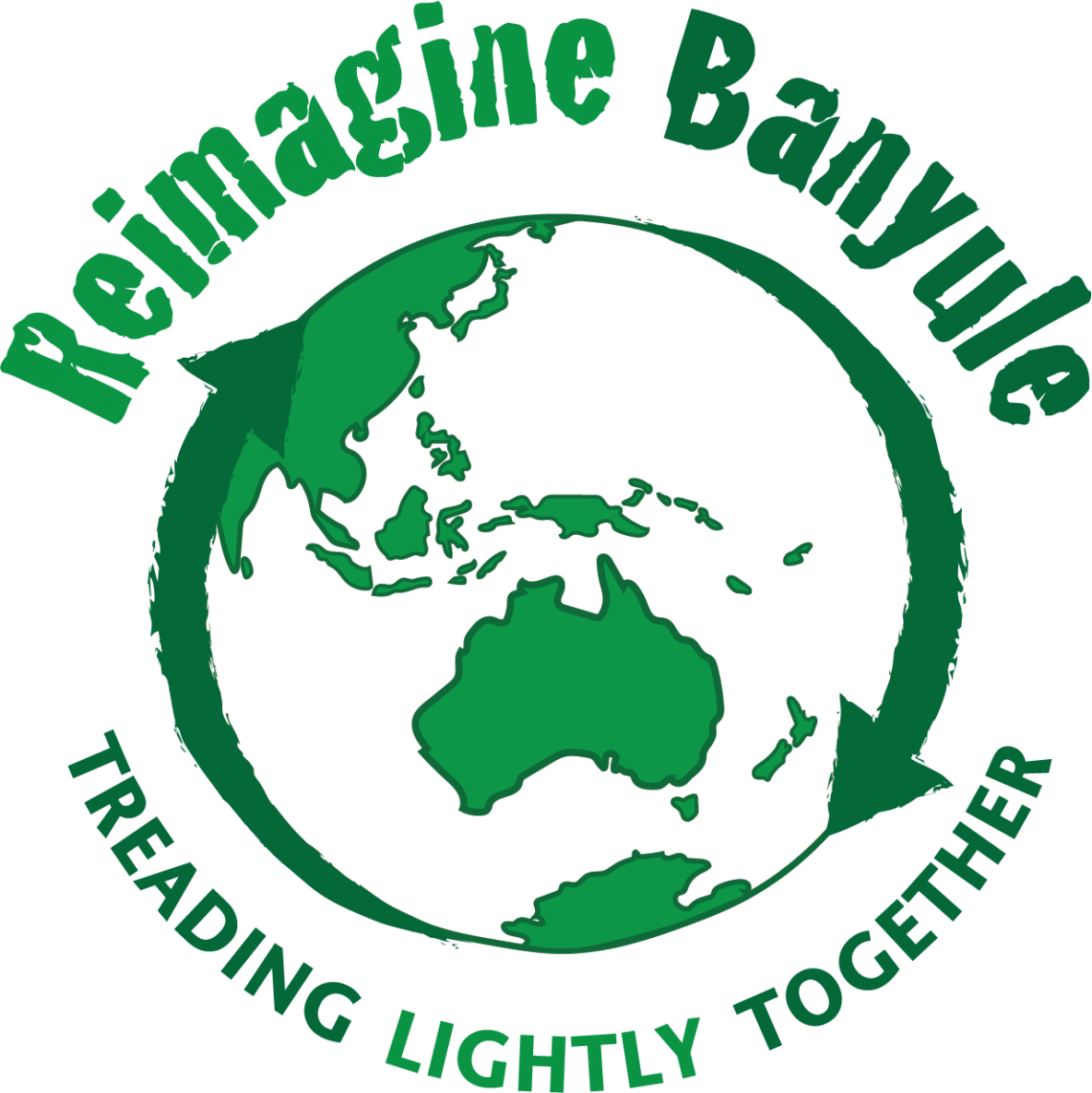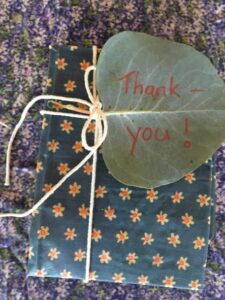R is for Repair, Repurposing, Reciprocity, Respect, Retrosuburbia
Repair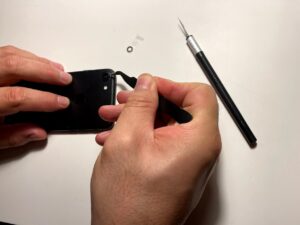
Repair is about more than repairing something that’s broken. It’s about repairing ourselves and the world around us. A couple of years ago I attended a repair café run by Sustainable Watsonia. I went along with some broken earrings and was able to have them glued back together. Rubbish was being rescued from landfill all around me. It was so inspiring plus a wonderful opportunity to socialise and meet neighbours. There are many community members who love to repair, however don’t have a platform to offer their service. We are offering to place a repair symbol on our Reimagine Banyule map for local repairers.
Do you know of a local person or business in Banyule who loves to repair? What do they repair? Are they happy to be added to our map?
Image description: White background with hands replacing broken lens on a black smartphone.
Repurpose
I was once walking and observing the freshly fallen large leaves of a eucalyptus tree. It occurred to me that the leaf was a similar size and shape to the sticky notes that I’d been using. I picked up a couple and started writing notes on them and haven’t purchased a sticky note since. I’m not the first person to utilise a leaf this way. I have been told that there is an old leaf at the state library with a letter written on it. It even has a stamp! At the end of their life these leaves can be composted. Another wonderful item to repurpose is cotton. You can cut it into strips/squares/rectangles to make beeswax wraps, hankies and boomerang bags plus much much more. What have you repurposed lately?
Image description: A gum leaf repurposed as a thank you card (Written on the leaf in red writing are the words ‘Thank you’). Under the leaf is a freshly made beeswax wrap, made with old cotton fabric and beeswax. It is used as a cling wrap alternative. The leaf is tied onto the beeswax wrap with reusable cotton twine.
Reciprocity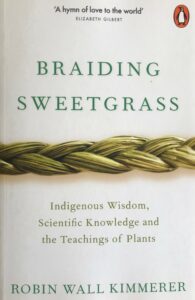
How can we reimagine reciprocity in Banyule? What do you give back for all that is given to you? In many ways when we intentionally decrease our footprint to tread more lightly we inadvertently give back to the living world all around us. For example if we install a composting toilet then we are providing food for the worms and other organisms in the soil. If we switch to cloth menstrual products then we can easily return our blood to the earth. If we grow food in our garden then we are given the gift of seeds and in a very short time have enough to share and grow a forest. There are also some local Landcare/’friends of” groups that you can join to get involved in weeding and planting in local reserves. Do you have a reciprocal relationship with the living world around you? Would you like to share your tips with us?
Image: Photo of front cover of the book Braiding Sweetgrass by Robin Wall Kimmerer. Available from your local library. Robin highlights the importance of ‘Reciprocity’ and ‘Returning the gift’.
Respect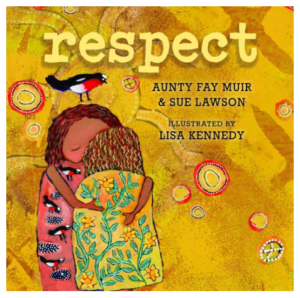
Many years ago our ancestors were all a part of societies where respect was core to living every moment of every day. Have you considered how your ancestors lived and which language/s they spoke? What were their core values?
The ancestors who lived here listened to country and it’s needs and responded respectfully. Once when I was visiting Alice Springs I had a chance encounter with an Indigenous Elder. He said he was thirsty so I offered him my water bottle which he declined. He said that to drink water from anywhere other than the ‘source’ is against the LORE. When he said this it triggered a memory inside of me. A memory that this LORE applies to all animals, all of us. Furthermore, I can imagine that if we all lived this LORE that the condition of our local waterways would very quickly return to a drinkable state. This is because we would be protecting them as if our lives depend on them being healthy, because ultimately they do.
Image: Picture of the front cover of the book titled ‘respect’ written by Aunty Fay Muir and Sue Lawson. Illustrated by Lisa Kennedy. The book cover has a drawing of two people hugging, one with a small bird just above them. In the background there are Indigenous symbols illustrating respect for county.
RetroSuburbia 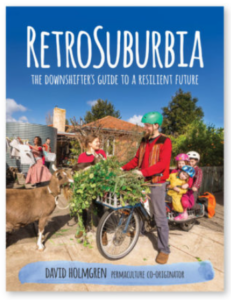
Did you know that some of our local Banyule residents were featured in David Holmgren’s book RetroSuburbia: the downshifter’s guide to a resilient future? There are some really life changing ideas showcased in this book. This book is available at your local library. Many local community groups and members also have a copy that they are happy to loan out. What are your ideas for reimagining and retrofitting suburbia?
